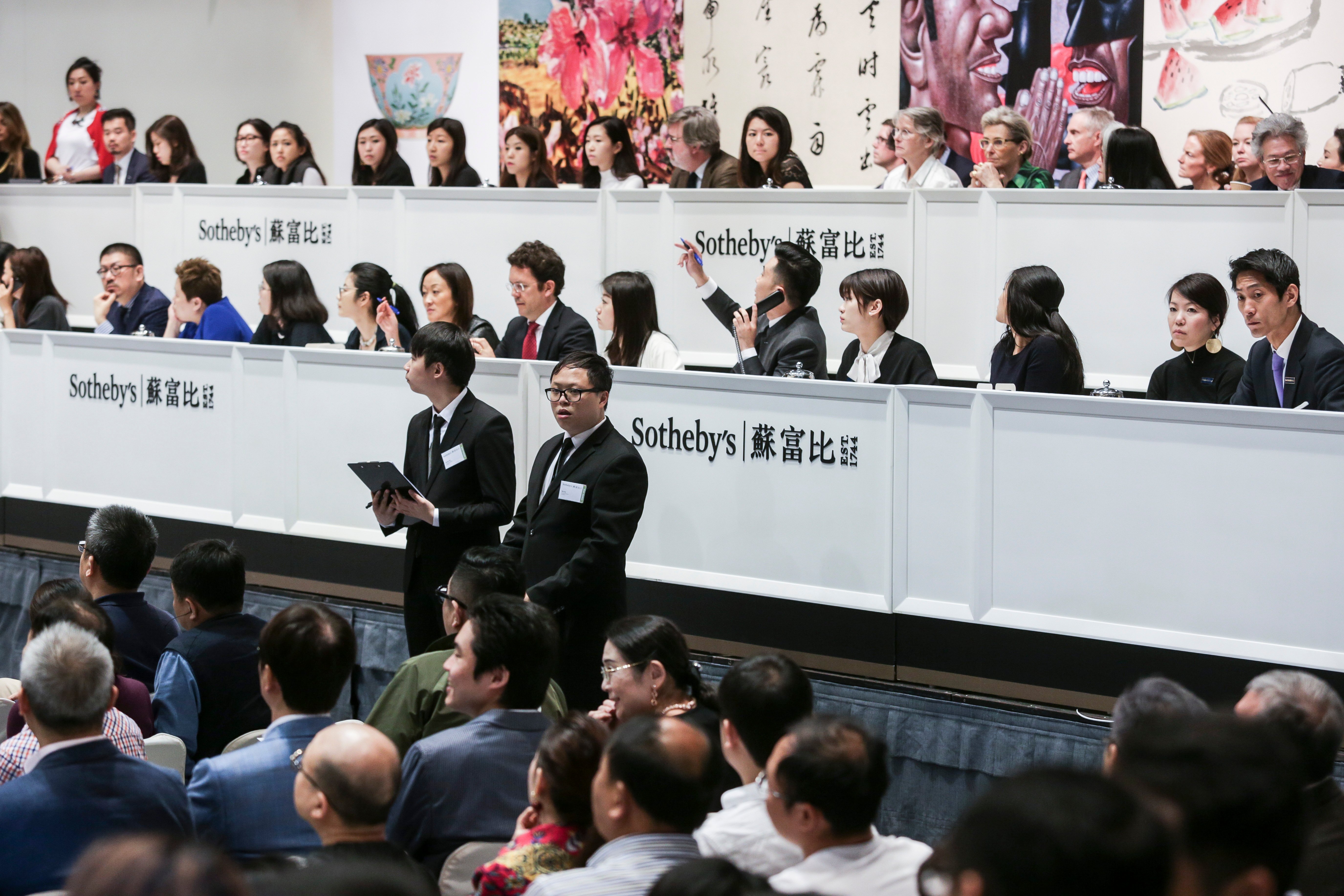
Ignited in June by a (since-withdrawn) bill that would allow extradition to mainland China, the ongoing political protests in Hong Kong have escalated into a struggle over the future of democracy there. Clashes between activists and police seem to have engulfed all aspects of life in the special administrative region, including commerce. And while the state of trade ranks far down the priorities list from the well-being of residents and visitors alike, Hong Kong’s nascent status as an art-market hub has left dealers, auction houses, fair organizers, and artists wondering what impact the unrest might be having on their livelihoods.
No one among this group has been more bullish about Hong Kong’s future than the auction sector. Christie’s recently announced that it would hold a new sale of 20th century and contemporary art in March 2020 to sync with the next edition of Art Basel Hong Kong (which fair officials say will continue as planned). Last week, Sotheby’s also released a report touting the $208 million in contemporary-art sales achieved by its Hong Kong branch in 2019 as “the strongest year in Asia’s history.”
But while the fanfare might lead you to believe that results in Hong Kong’s auction houses were never better than during this fall, which saw the first major slate of fine-art sales since the start of the protests, the data says otherwise.
© Artnet Price Database 2019.
Fine-art sales in Hong Kong totaled roughly $661 million this fall, down about six percent from the nearly $702 million achieved during the equivalent period in 2018, after adjusting for inflation. The number of lots sold dropped even more sharply, from 3,908 last fall to 3,199 this year—a slump of about 18 percent.
Since correlation is not causation, it’s difficult to know how much, if any, of these results stem from Hong Kong’s political unrest. But it is worth noting that this is in fact the second straight year of decline in both metrics.
Sales value and lots sold in the period from September through November each peaked in 2017, with 4,230 works together bringing in roughly $715 million. Both figures declined modestly in 2018, then more aggressively this fall. These additional data points suggest that the volatility on the streets of Hong Kong may only have amplified a cooling effect already in progress.
Are Auction Houses Misreading the Signals?
It’s important to keep perspective on these results. Fine-art sales in Hong Kong’s fall season have now orbited around the $700 million mark for three straight years. That is a colossal victory even compared to the roughly $423 million achieved in the same period back in 2015, a year before Phillips held its first major sale in the region.
The $41 million ebb in sales value between fall 2018 and fall 2019 also cries out for context. This year, Chinese-French modernist Sanyu’s Five Nudes (ca. 1955) sold for just shy of $39 million at the 20th century and contemporary art evening sale held by Christie’s Hong Kong in November, while Sotheby’s Hong Kong shattered Yoshitomo Nara’s world auction record by selling his painting Knife Behind Back (2000) for $25 million a month earlier. One or two more paintings of similar quality could easily have pushed this fall’s results above those achieved in 2018.
Sales for 2019 year-to-date remain encouraging, too. Fine art had brought $1.37 billion into Hong Kong’s auction houses in 11 months—just $12.6 million less than in all of 2018, after adjusting for inflation. Last year’s total ($1.39 billion) also qualified as a record for the region.
Still, the point is that this fall’s modest retrenchment—which coincides with unrest in the region—looks to be the main reason 2019 as a whole won’t soar much, if at all, above the previous year’s results. It would also be unwise to write off the 18 percent year-over-year decline in lots sold between fall 2018 and fall 2019, which show that there is less transacting happening across the board, not just on the top lots. Together, these figures suggest a broader-based chill has crept into Hong Kong’s auction houses.
We need more data to determine whether this is simply normal season-to-season fluctuation that reflects the broader quieting of the market worldwide, or a deeper effect of the political and economic volatility that the region has been experiencing since June. But based on the fall season, no one should dismiss the latter possibility out of hand.
Methodology: This article examines sales at fine art auctions held from September 1 through November 30 at all auction houses in Hong Kong between 2015 and 2019. An important caveat: These figures reflect winning bids, but late payments and outright defaults continue to be major challenges for the Chinese art market, so results may not always reflect completed sales. All sales values are denominated in US dollars, include buyer’s premiums, and have been adjusted for inflation. All data comes courtesy of the artnet Price Database and artnet Analytics Reports.